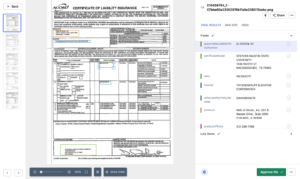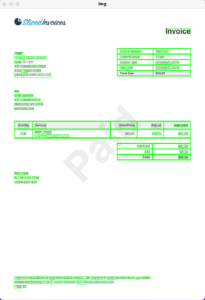
Days Payable Outstanding (DPO) is a financial metric that measures the number of days a company takes on average to pay outstanding supplier/vendor invoices for purchases made on credit. It provides valuable insights into a company's management of accounts payable, cash flow, and working capital efficiency.
Key Takeaways:
- DPO is a financial metric that measures how long a company takes to pay its outstanding supplier/vendor invoices.
- A higher DPO indicates more near-term liquidity and increased cash on hand for the company.
- The formula to calculate DPO is (Average Accounts Payable ÷ Cost of Goods Sold) × 365.
- Maintaining a high DPO can lead to increased cash availability, potential vendor incentives, and investor appeal.
- A high DPO can also strain vendor relationships and result in missed supplier discounts.
DPO varies by industry and depends on a company's bargaining power in those industries. It is an important metric in cash-flow management and financial analysis, providing valuable insights into a company's overall financial health and efficiency in managing accounts payable.
How to Calculate DPO: A Step-by-Step Guide
Calculating Days Payable Outstanding (DPO) is crucial to understanding a company's ability to manage its payables efficiently and optimize working capital. DPO is a financial metric that measures the average number of days it takes for a company to pay its outstanding supplier/vendor invoices for purchases made on credit. By calculating DPO, businesses can gain valuable insights into their cash flow management and working capital efficiency.
To calculate DPO, you will need two key pieces of data: Average Accounts Payable and Cost of Goods Sold (COGS). Average Accounts Payable represents the average amount of money owed to suppliers at any given time, while COGS reflects the direct costs associated with producing goods or services. The formula to calculate DPO is straightforward:
(Average Accounts Payable ÷ COGS) × 365
Let's break down the steps involved in calculating DPO:
- Determine the Average Accounts Payable: Add the beginning and ending accounts payable for a specific time period, such as a month or quarter, and divide the sum by two.
- Find the Cost of Goods Sold: This information can be obtained from the company's income statement. COGS includes expenses directly related to the production of goods, such as raw materials, labor, and manufacturing overhead costs.
- Apply the Formula: Divide the Average Accounts Payable by the Cost of Goods Sold and multiply the result by 365 to calculate the number of days it takes for a company to pay its suppliers.
| Average Accounts Payable | Cost of Goods Sold (COGS) | DPO |
|---|---|---|
| $250,000 | $1,000,000 | 91 |
By calculating DPO, businesses can gain valuable insights into their financial health. A higher DPO indicates a company's ability to manage payables effectively, optimize working capital, and improve cash flow. Conversely, a lower DPO may indicate inefficiencies in the payables process or unfavorable credit terms compared to industry peers. It's important for companies to regularly monitor and analyze their DPO to identify opportunities for improvement and make informed financial decisions.
The Advantages of Maintaining a Higher DPO
Maintaining a higher Days Payable Outstanding (DPO) ratio comes with several advantages, such as optimizing payables and effectively managing cash flow. By extending the payment cycle, businesses can improve their near-term liquidity and increase the amount of cash available on hand. This can be particularly beneficial during periods of economic uncertainty or when unexpected expenses arise.
One of the key benefits of a higher DPO is the potential for vendor incentives. Suppliers may offer discounts or other favorable terms to businesses that consistently pay their invoices within a specific timeframe. By strategically managing their DPO ratio, companies can take advantage of these incentives and reduce their overall costs of purchasing goods or services.
Furthermore, maintaining a higher DPO can enhance investor appeal. Investors often view a higher DPO as a sign of efficient cash flow management and working capital optimization. It indicates that the business has control over its liabilities and is effectively utilizing its resources to maximize profitability.
However, it is important to note that while a higher DPO can offer significant advantages, it must be balanced with maintaining healthy relationships with suppliers. A strained vendor relationship can have negative consequences on the quality and timeliness of goods or services received. Additionally, businesses with a high DPO may miss out on early payment discounts or other benefits that suppliers extend to prompt payers.
| Advantages of Maintaining a Higher DPO: | Disadvantages of Maintaining a Higher DPO: |
|---|---|
| - Improved near-term liquidity | - Strained vendor relationships |
| - Increased cash availability | - Missed supplier discounts |
| - Potential vendor incentives | |
| - Enhanced investor appeal |
The Importance of Maintaining a Healthy DPO Ratio
Optimizing payables through a higher DPO can play a crucial role in effective cash flow management. By strategically managing payment terms and keeping the DPO at an optimal level, businesses can ensure their working capital is efficiently utilized, reducing the risk of cash shortages and improving overall financial stability.
In conclusion, businesses should carefully evaluate their payment cycles and leverage the advantages of maintaining a higher DPO. While balancing the potential disadvantages, a well-managed DPO can provide significant benefits in terms of optimizing payables, effectively managing cash flow, and enhancing investor appeal.
Potential Consequences of a High DPO
While a high Days Payable Outstanding (DPO) can provide near-term liquidity, it may also strain vendor relationships and lead to missed opportunities for supplier discounts. Maintaining an extended payment cycle can have both advantages and disadvantages for a company, depending on its specific circumstances and industry dynamics.
One potential consequence of a high DPO is strained vendor relationships. Suppliers may become frustrated or even hesitant to extend credit terms if they consistently experience delayed payments. This can result in delayed deliveries, reduced product quality, or even strained business partnerships. In industries where strong supplier relationships are crucial, such as manufacturing or retail, a high DPO can be particularly detrimental.
Furthermore, a high DPO may lead to missed opportunities for supplier discounts. Many suppliers offer early payment incentives, such as discounts or rebates, to encourage prompt payment. By extending the payment cycle, a company may inadvertently miss out on these benefits. Over time, these missed opportunities can add up and negatively impact the company's bottom line.
| Potential Consequences of a High DPO | Solutions |
|---|---|
| Strained vendor relationships | Regular communication and transparency with suppliers, negotiating favorable payment terms |
| Missed opportunities for supplier discounts | Implementing automated payment systems, taking advantage of early payment incentives |
In order to mitigate the potential consequences of a high DPO, companies can proactively manage their supplier relationships and payment processes. Regular communication and transparency with suppliers can help minimize any strain caused by extended payment cycles. Negotiating favorable payment terms, such as longer invoice due dates or installment plans, can also help maintain good vendor relationships.
Additionally, adopting automated payment systems can streamline the accounts payable process and increase efficiency. These systems can facilitate timely and accurate payments, ensuring that the company takes advantage of any early payment incentives offered by suppliers. By optimizing payment processes and actively managing supplier relationships, companies can strike a balance between maintaining a healthy DPO and fostering strong partnerships with their vendors.
Interpreting a Low DPO
A low Days Payable Outstanding (DPO) may indicate an inefficiently operating company or less favorable credit terms compared to competitors. When a company struggles to pay its outstanding supplier invoices within a reasonable timeframe, it can signal potential issues with its cash flow management or financial stability. Additionally, it may suggest that the company has less favorable credit terms with its suppliers, which can restrict its ability to manage its accounts payable effectively.
In such cases, the company may face challenges in meeting its financial obligations on time, leading to strained relationships with suppliers and potential disruptions in the supply chain. This can also result in missed opportunities to take advantage of supplier discounts and incentives, further impacting the company's overall financial health.
Companies with a low DPO should closely examine their payment cycles and identify areas for improvement. By implementing strategies to reduce the payment cycle and negotiate more favorable credit terms with suppliers, they can enhance their cash flow management and strengthen their financial position. It is crucial for businesses to recognize the importance of optimizing their payables and explore opportunities for greater efficiency in order to improve their DPO and overall financial performance.
| Implications of a Low DPO: |
|---|
| The company may be experiencing cash flow challenges |
| Less favorable credit terms compared to competitors |
| Strained relationships with suppliers |
| Missed opportunities for supplier discounts and incentives |
Factors Affecting DPO in Different Industries
The Days Payable Outstanding (DPO) metric varies across industries and is influenced by the bargaining power of a company within those industries. Various factors contribute to this variation, including payment terms negotiated with suppliers and the nature of the industry itself. By understanding these factors, companies can gain insights into their cash flow management and supplier relationships.
Industry-Specific Payment Terms
Different industries have specific payment terms that affect their DPO. For example, industries with longer supply chains, such as manufacturing or construction, may have longer payment terms due to the involvement of multiple intermediaries. On the other hand, industries with faster inventory turnover, like retail or technology, may have shorter payment terms to maintain their competitive edge.
Additionally, regulatory requirements or industry norms may dictate the payment terms within certain sectors. For instance, government contracts often have specific payment terms set by regulations, which can influence a company's DPO.
Bargaining Power
The bargaining power of a company within its industry plays a crucial role in determining its DPO. Companies with strong market positions and established relationships with suppliers can negotiate more favorable payment terms, leading to a higher DPO. Conversely, companies with weaker bargaining power may have to accept less favorable payment terms, resulting in a lower DPO.
Moreover, larger companies often have more leverage in negotiations and can demand extended payment terms. This allows them to preserve cash flow and maintain a higher DPO compared to smaller competitors.
"A company's DPO can vary significantly based on industry-specific payment terms and the company's bargaining power within those industries."
| Industry | Average DPO (Days) |
|---|---|
| Manufacturing | 45 |
| Retail | 30 |
| Technology | 60 |
| Construction | 90 |
Table 1: Average DPO by Industry
Understanding the factors that impact DPO in different industries is essential for businesses to optimize their accounts payable processes. By leveraging their bargaining power and aligning payment terms with industry standards, companies can improve their DPO, enhance working capital efficiency, and strengthen their overall financial position.
Strategies for Improving DPO
There are several strategies businesses can employ to improve their Days Payable Outstanding (DPO) and enhance their accounts payable management. By implementing these strategies, companies can optimize their cash flow, strengthen vendor relationships, and achieve better financial stability.
- Negotiate favorable payment terms: When establishing supplier contracts, negotiate longer payment terms to extend the DPO. This allows businesses to hold onto cash for a longer period while still meeting their financial obligations.
- Streamline accounts payable processes: Implementing efficient accounts payable systems can help companies process invoices and payments more quickly and accurately. Automation technologies, such as invoice scanning and electronic payment platforms, can significantly reduce manual errors and delays.
- Take advantage of early payment discounts: Some suppliers offer discounts for early payment. By taking advantage of these discounts, businesses can reduce their DPO while still saving on overall costs. However, it's important to evaluate the discount rate and compare it to the opportunity cost of holding onto the cash for a longer period.
Additionally, maintaining open communication with suppliers is crucial for successful accounts payable management. Building strong relationships with vendors can lead to better payment terms, potential discounts, and improved overall cooperation.
Improving DPO Strategies Summary:
| Strategies for Improving DPO | Benefits |
|---|---|
| Negotiate favorable payment terms | - Extend DPO - Maintain cash flow |
| Streamline accounts payable processes | - Faster invoice processing - Reduced errors and delays |
| Take advantage of early payment discounts | - Reduced costs - Potential savings |
Importance of DPO in Cash Flow Management
Days Payable Outstanding (DPO) plays a crucial role in effective cash flow management and can significantly impact a company's financial stability. DPO measures the average number of days it takes for a company to pay its outstanding supplier/vendor invoices for purchases made on credit. By understanding and carefully managing DPO, businesses can optimize their cash flow, improve working capital efficiency, and enhance their overall financial health.
One of the key benefits of maintaining a higher DPO is increased cash availability. When a company takes longer to pay its suppliers, it can free up cash that can be used for other critical business needs, such as investing in growth opportunities or paying down debt. This improved liquidity can provide a cushion during economic downturns and help businesses navigate unexpected expenses or fluctuations in revenue.
Furthermore, a higher DPO can create opportunities for potential vendor incentives. Suppliers may offer discounts or favorable terms to companies that consistently pay their invoices later. These incentives can further improve a company's financial position and enhance its competitiveness in the market. Additionally, a favorable DPO ratio can also attract investors, as it demonstrates efficient cash flow management and financial stability.
| Advantages of Maintaining a Higher DPO | Potential Consequences of a High DPO |
|---|---|
| Increased cash availability | Strained relationships with suppliers |
| Potential vendor incentives | Missed supplier discounts |
| Enhanced financial stability |
However, it is important to note that maintaining a high DPO can also have potential drawbacks. Strained relationships with suppliers may arise if payment terms become excessively extended, leading to possible disruptions in the supply chain or reduced willingness from vendors to provide favorable pricing or terms. Additionally, delaying payments for too long can result in missed supplier discounts, ultimately increasing costs for the company.
On the other hand, a low DPO may indicate inefficiencies in a company's operations or worse credit terms compared to its competitors. A shorter payment cycle can strain cash flow, making it challenging to meet other financial obligations or invest in growth initiatives. Therefore, it is crucial for businesses to strike a balance and carefully manage their DPO to maintain healthy supplier relationships while optimizing their cash flow and working capital.
Overall, DPO is an important financial metric that offers valuable insights into a company's cash flow management practices. By understanding the advantages and potential consequences of maintaining a higher DPO, businesses can make informed decisions to optimize their payment cycles, enhance financial stability, and position themselves for long-term success.
The Link Between DPO and Working Capital Efficiency
Maintaining an optimal Days Payable Outstanding (DPO) is directly linked to achieving efficient working capital and optimizing payables. This financial metric plays a crucial role in managing a company's cash flow and overall financial health.
By carefully managing the time it takes to pay outstanding supplier invoices, companies can enhance their working capital efficiency. A higher DPO indicates that the company takes longer to pay its suppliers, resulting in increased cash availability and liquidity in the short term. This can be advantageous in maintaining a healthy cash flow and ensuring the availability of funds for other business needs.
Optimizing payables through an efficient DPO strategy also has the potential to unlock various benefits. Suppliers may offer incentives such as discounts or extended payment terms to encourage longer payment cycles. By strategically taking advantage of these opportunities, companies can further improve their financial position and reduce costs.
| Advantages of Maintaining a Higher DPO |
|---|
| Increased cash availability |
| Potential vendor incentives |
| Enhanced working capital efficiency |
| Improved overall financial stability |
However, it's important to strike a balance and avoid excessively long payment cycles. A high DPO can strain relationships with suppliers, potentially leading to delayed or reduced deliveries, strained communication, or even the loss of preferred terms. It's crucial for companies to maintain strong supplier relationships while optimizing payables.
Additionally, a low DPO may indicate operational inefficiencies or less favorable credit terms compared to competitors. It could suggest that a company is not effectively utilizing credit or not taking advantage of available discounts. Regular monitoring and analysis of DPO trends can help identify areas for improvement and guide decision-making to optimize cash flow management.
Achieving an optimal Days Payable Outstanding requires careful consideration of industry-specific factors and a company's bargaining power. DPO can vary across industries, with companies in certain sectors having more leverage to negotiate favorable payment terms with suppliers. Understanding these industry dynamics is crucial for developing effective strategies to improve DPO and enhance financial performance.
In summary, maintaining an optimal Days Payable Outstanding is key to achieving efficient working capital and optimizing payables. It allows companies to manage cash flow effectively, increase liquidity, and take advantage of potential vendor incentives. By striking the right balance and considering industry-specific factors, companies can enhance their financial stability and position themselves for long-term success.
Industry Benchmarks and Investor Appeal
Industry benchmarks for Days Payable Outstanding (DPO) can provide valuable insights into a company's financial performance and attractiveness to investors. By comparing a company's DPO ratio to industry standards, investors can gauge the company's efficiency and effectiveness in managing its accounts payable. A favorable DPO ratio demonstrates that a company is able to optimize its payables and maintain healthy cash flow, which is a key factor in evaluating the financial stability and potential growth of an organization.
According to industry data, the average DPO ratio varies across sectors. For example, technology companies tend to have a higher DPO ratio compared to retailers due to longer supplier payment terms. This indicates that technology companies have more time to pay their suppliers, allowing them to preserve cash and invest in their core operations. On the other hand, retailers typically have shorter payment cycles and lower DPO ratios, which can be attributed to the nature of their business and the need to manage inventory levels.
| Industry | Average DPO Ratio |
|---|---|
| Technology | 45 days |
| Manufacturing | 55 days |
| Retail | 35 days |
Investors often consider a company with a DPO ratio above the industry average as a positive sign, as it indicates strong cash flow management and the ability to leverage supplier relationships. A higher DPO ratio implies that the company has more working capital available, which can be used for strategic initiatives such as investments in research and development or expansion plans. As a result, companies with a favorable DPO ratio may be perceived as more financially stable and attractive to potential investors.
However, it is essential to note that DPO benchmarks should not be considered in isolation. The analysis of DPO ratios should be combined with a comprehensive assessment of the company's overall financial health, including other key financial metrics and industry-specific factors. Additionally, it is important to consider the company's specific circumstances and business model when evaluating its DPO ratio in relation to industry benchmarks.
Industry benchmarks for DPO ratio:
- Technology: 45 days
- Manufacturing: 55 days
- Retail: 35 days
Leveraging Technology for DPO Management
Technology can be a valuable tool in streamlining accounts payable processes and reducing the payment cycle to optimize Days Payable Outstanding (DPO). With the advancements in digital solutions, businesses can automate and digitize their accounts payable functions, leading to increased efficiency and improved financial management.
One key technology that can greatly enhance DPO management is electronic invoicing. By implementing electronic invoicing systems, companies can eliminate manual processes, reduce errors, and expedite invoice processing. This not only speeds up the payment cycle but also improves accuracy in recording and reconciling invoices, ultimately leading to a more optimized DPO.
Another technological innovation that can revolutionize DPO management is the use of automated payment systems. These systems allow businesses to schedule and automate payments, ensuring timely settlement of outstanding invoices while maintaining control over payment terms. By reducing the time lag between receiving invoices and making payments, companies can effectively manage their DPO and strengthen relationships with suppliers.
| Technology Benefits for DPO Management |
|---|
| Streamlined accounts payable processes |
| Reduced payment cycle |
| Improved accuracy in invoice processing |
| Efficient scheduling and automation of payments |
Additionally, leveraging cloud-based accounting software can provide real-time visibility into payables, allowing businesses to monitor and analyze payment trends, identify bottlenecks, and optimize their DPO. These platforms often offer features such as vendor portals, electronic document storage, and analytics dashboards, simplifying the overall management of accounts payable.
In conclusion, embracing technological solutions for accounts payable can significantly impact DPO management. By leveraging electronic invoicing, automated payment systems, and cloud-based accounting software, businesses can streamline processes, reduce the payment cycle, and ultimately optimize their Days Payable Outstanding for enhanced financial stability and efficiency.
Conclusion
Days Payable Outstanding (DPO) is a critical metric in cash flow management, working capital efficiency, and optimizing payables, making it essential for businesses to understand and manage effectively. By measuring the number of days a company takes on average to pay outstanding supplier invoices, DPO provides valuable insights into a company's financial health and liquidity.
Maintaining a higher DPO can lead to increased cash availability and potential vendor incentives. It also enhances investor appeal, as it demonstrates effective cash flow management and working capital efficiency. However, it is important to strike a balance, as a high DPO may strain vendor relationships and result in missed supplier discounts.
Conversely, a low DPO may indicate operational inefficiencies or worse credit terms compared to competitors. Monitoring DPO can help businesses identify areas for improvement and optimize their payables for better financial health and stability.
It is worth noting that DPO can vary across industries and depends on a company's bargaining power. Understanding industry benchmarks and leveraging technology for efficient accounts payable management can further enhance DPO and overall financial performance.
Ultimately, effective cash flow management, working capital efficiency, and optimizing payables are key to sustainable business growth. By closely monitoring and strategically managing DPO, businesses can achieve better financial stability, improve liquidity, and enhance their overall performance in the competitive marketplace.
FAQ
Q: What is Days Payable Outstanding (DPO)?
A: Days Payable Outstanding (DPO) is a financial metric that measures the number of days a company takes on average to pay outstanding supplier/vendor invoices for purchases made on credit.
Q: How is DPO calculated?
A: The formula to calculate DPO is (Average Accounts Payable ÷ Cost of Goods Sold) × 365.
Q: What are the advantages of maintaining a high DPO?
A: Maintaining a high DPO can increase cash availability, potential vendor incentives, and appeal to investors.
Q: What are the potential consequences of a high DPO?
A: A high DPO can strain vendor relationships and result in lost supplier discounts.
Q: What does a low DPO indicate?
A: A low DPO may indicate an inefficiently operating company or worse credit terms compared to competitors.
Q: Does DPO vary by industry?
A: Yes, DPO can vary by industry and depends on a company's bargaining power in those industries.
Q: Are there strategies for improving DPO?
A: Yes, there are strategies for improving DPO, such as managing accounts payable effectively.
Q: How does DPO impact cash flow management?
A: DPO is an important metric in cash flow management as it can improve overall financial stability.
Q: What is the link between DPO and working capital efficiency?
A: DPO is closely related to working capital efficiency and optimizing payables for better financial health.
Q: Does a favorable DPO ratio enhance investor appeal?
A: Yes, a favorable DPO ratio can enhance investor appeal.
Q: How can technology be leveraged for DPO management?
A: Technology can be used to effectively manage accounts payable and reduce the payment cycle, improving DPO.
- SEO Powered Content & PR Distribution. Get Amplified Today.
- PlatoData.Network Vertical Generative Ai. Empower Yourself. Access Here.
- PlatoAiStream. Web3 Intelligence. Knowledge Amplified. Access Here.
- PlatoESG. Carbon, CleanTech, Energy, Environment, Solar, Waste Management. Access Here.
- PlatoHealth. Biotech and Clinical Trials Intelligence. Access Here.
- Source: https://nanonets.com/blog/days-payable-outstanding/
- :has
- :is
- :not
- :where
- $UP
- 000
- 1
- a
- ability
- Able
- above
- Accept
- Accounting
- accounting software
- Accounts
- accounts payable
- accuracy
- accurate
- accurately
- Achieve
- achieving
- across
- actively
- add
- Additionally
- Adopting
- advancements
- ADvantage
- advantageous
- advantages
- affect
- affecting
- aligning
- allow
- Allowing
- allows
- also
- amount
- an
- analysis
- analytics
- analyze
- and
- any
- appeal
- ARE
- areas
- arise
- AS
- assessment
- associated
- At
- attract
- attractive
- automate
- Automated
- Automation
- availability
- available
- average
- avoid
- Balance
- balancing
- based
- BE
- become
- Beginning
- benchmarks
- beneficial
- benefits
- Better
- between
- both
- Bottom
- Break
- Building
- business
- business model
- businesses
- but
- by
- calculate
- calculated
- calculating
- CAN
- capital
- capital efficiency
- careful
- carefully
- cases
- Cash
- cash flow
- caused
- certain
- chain
- chains
- challenges
- challenging
- circumstances
- closely
- combined
- comes
- Communication
- Companies
- company
- compare
- compared
- comparing
- competitive
- competitiveness
- competitors
- comprehensive
- conclusion
- Consequences
- Consider
- consideration
- considered
- considering
- consistently
- construction
- contracts
- contribute
- control
- conversely
- cooperation
- Core
- Cost
- Costs
- could
- create
- credit
- critical
- crucial
- cycle
- cycles
- dashboards
- data
- Dates
- Days
- Debt
- Decision Making
- decisions
- Delayed
- delays
- Deliveries
- Demand
- demonstrates
- Depending
- depends
- determining
- developing
- Development
- dictate
- different
- digital
- digitize
- direct
- directly
- Discount
- discounts
- disruptions
- divide
- document
- does
- down
- downturns
- drawbacks
- due
- during
- dynamics
- Early
- Economic
- economic uncertainty
- Edge
- Effective
- effectively
- effectiveness
- efficiency
- efficient
- efficiently
- Electronic
- electronic payment
- eliminate
- embracing
- encourage
- ending
- enhance
- enhanced
- Enhances
- enhancing
- ensure
- ensuring
- Errors
- essential
- established
- establishing
- evaluate
- evaluating
- Even
- examine
- example
- excessively
- expansion
- expedite
- expenses
- experience
- experiencing
- explore
- extend
- extending
- Face
- facilitate
- factor
- factors
- FAQ
- faster
- favorable
- Features
- financial
- financial health
- financial management
- financial performance
- financial stability
- financially
- flow
- fluctuations
- For
- formula
- fostering
- Free
- from
- frustrated
- functions
- funds
- further
- Gain
- gauge
- given
- good
- goods
- Government
- greater
- greatly
- Growth
- guide
- hand
- Have
- having
- Health
- healthy
- help
- Hesitant
- High
- higher
- hold
- holding
- How
- However
- HTTPS
- identify
- if
- Impact
- impacting
- implementing
- importance
- important
- improve
- improved
- improvement
- improves
- improving
- in
- inadvertently
- Incentives
- includes
- Including
- Income
- Increase
- increased
- increasing
- indicate
- indicates
- industries
- industry
- industry standards
- industry-specific
- influence
- influenced
- information
- informed
- initiatives
- Innovation
- insights
- installment
- instance
- intermediaries
- into
- inventory
- Invest
- investing
- Investments
- investor
- Investors
- invoice processing
- invoicing
- involved
- involvement
- isolation
- issues
- IT
- ITS
- itself
- keeping
- Key
- key factor
- labor
- larger
- later
- lead
- leading
- less
- Level
- levels
- Leverage
- leveraged
- leveraging
- liabilities
- like
- Line
- LINK
- linked
- Liquidity
- Long
- long-term
- longer
- loss
- lost
- Low
- lower
- made
- maintain
- maintaining
- make
- Making
- manage
- management
- managing
- manual
- manufacturing
- many
- Market
- marketplace
- materials
- Maximize
- May..
- measures
- measuring
- Meet
- meeting
- metric
- Metrics
- missed
- Mitigate
- model
- money
- Monitor
- monitoring
- Month
- more
- multiple
- must
- Nature
- Navigate
- Need
- needs
- negative
- negatively
- negotiated
- negotiations
- norms
- note
- noting
- number
- obligations
- obtained
- of
- offer
- offered
- Offers
- often
- on
- only
- open
- operating
- operational
- Operations
- opportunities
- Opportunity
- optimal
- optimization
- Optimize
- optimized
- optimizing
- or
- order
- organization
- Other
- out
- outstanding
- over
- overall
- owed
- particularly
- partnerships
- Pay
- paying
- payment
- Payment Systems
- payments
- peers
- perceived
- performance
- period
- periods
- pieces
- plans
- Platforms
- plato
- Plato Data Intelligence
- PlatoData
- Play
- plays
- position
- positions
- positive
- possible
- potential
- potentially
- power
- practices
- preferred
- pricing
- process
- processes
- processing
- producing
- Product
- Product Quality
- Production
- profitability
- provide
- provides
- providing
- purchases
- purchasing
- quality
- Quarter
- quickly
- Rate
- ratio
- Raw
- real-time
- reasonable
- rebates
- received
- receiving
- recognize
- reconciling
- recording
- reduce
- Reduced
- reducing
- reflects
- regular
- regularly
- regulations
- regulatory
- related
- relation
- relationship
- Relationships
- represents
- Requirements
- requires
- research
- research and development
- Resources
- restrict
- result
- resulting
- retail
- retailers
- revenue
- revolutionize
- right
- Risk
- Role
- s
- saving
- scanning
- schedule
- scheduling
- Sectors
- Services
- set
- settlement
- several
- Short
- shortages
- should
- sign
- Signal
- significant
- significantly
- Simple
- simplifying
- smaller
- Software
- sold
- Solutions
- some
- specific
- speeds
- Stability
- stable
- standards
- Statement
- Steps
- Still
- storage
- straightforward
- Strategic
- Strategically
- strategies
- Strategy
- streamline
- streamlining
- Strengthen
- strike
- strong
- Struggles
- success
- successful
- such
- suggest
- sum
- SUMMARY
- supplier
- suppliers
- supply
- supply chain
- Supply chains
- sustainable
- Systems
- Take
- Takeaways
- takes
- taking
- technological
- Technologies
- Technology
- technology companies
- term
- terms
- that
- The
- their
- Them
- themselves
- There.
- therefore
- These
- they
- this
- those
- Through
- time
- timeframe
- timely
- to
- too
- tool
- Transparency
- Trends
- turnover
- two
- typically
- Ultimately
- Uncertainty
- understand
- understanding
- Unexpected
- unlock
- use
- used
- utilized
- Utilizing
- Valuable
- various
- vendor
- vendors
- View
- visibility
- What
- What is
- when
- which
- while
- will
- Willingness
- with
- within
- working
- worth
- yes
- you
- zephyrnet











